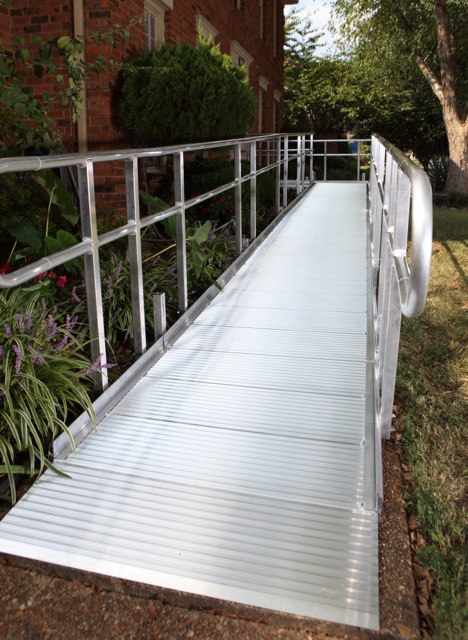As you get older, the fear of falling increases. According to the Centers for Disease Control and Prevention, about three million elderly people have to visit an emergency room every year due to fall injuries. While some falls occur purely as a fluke no one could have anticipated, most of the falls people experience are preventable. Having a wheelchair ramp for your home is one of the most recommended products for people with limited mobility, as you’re eliminating the most commonly used step to get inside your home. However, a wheelchair ramp can be dangerous also if it’s not installed properly or not used correctly. Here are some important ramp safety tips to keep in mind.
Incorporate Proper Slope
Having a professional install your wheelchair ramp is highly recommended so you can ensure the proper slope is used. The ADA standard says the slope should be one-foot of length per one-inch of rise. This allows for a perfect gradual incline and decline to keep you stable and balanced while walking on it, even on potentially wet surfaces. If you go out in public and see a wheelchair ramp that looks to be steeper than it should be, avoid it if possible to prevent an injury, especially if the outdoor conditions aren’t ideal.
Avoid Slippery Surfaces
Some wheelchair ramps are made of materials that make them dangerous to walk on when wet. Wood, concrete, and solid aluminum are commonly used materials for wheelchair ramps and can be slippery when moisture is present. Some of the better ramps include an open-weave surface that allows water, snow, and ice to pass through it, offering a safe surface to walk on. Even riding a mobility scooter on a slippery ramp can be dangerous since the wheels can lose traction and start spinning. When in doubt, avoid ramps with slippery surfaces or ask for assistance if you have to use it.
Consider The Turning Radius And Proper Handrails
Ramps that have turns should have the proper turning radius to make it safe for people in a wheelchair or a mobility scooter to turn. A 60” turning radius is the standard set by the ADA, but can be more depending on how wide the wheelchair ramp is. Making tight turns can be unsafe and put you in an undesirable position, so take a look at the turning radius before entering a particular ramp. Always look at the handrails on the ramps to ensure they are at a comfortable height on each side and are sturdy enough to lean on if you accidentally lose your balance and have to put your weight on them.
Next Day Access prioritizes wheelchair ramp safety with every product we install. Whether you need a temporary ramp to accommodate guests or need a permanent ramp installed in or around your home, we have you covered with high-quality products. Wheelchair ramps can solve many mobility problems when installed and used safely, so feel free to contact us if you could benefit from them.





